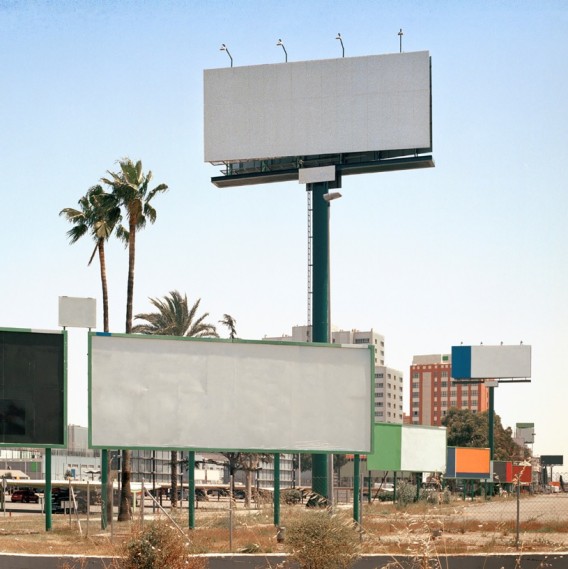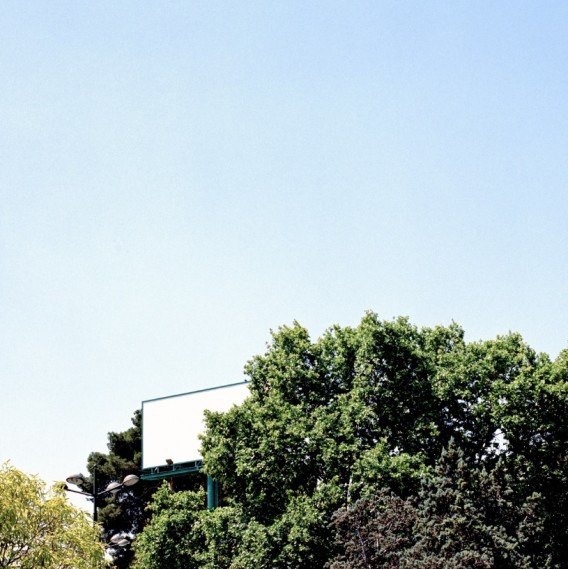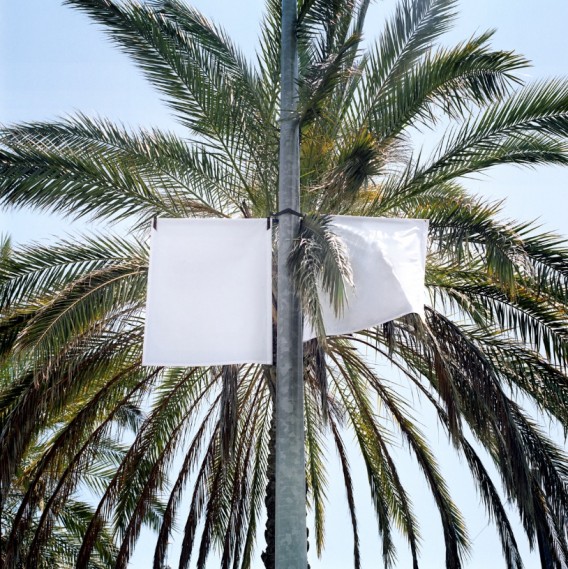The notion of emptiness is associated with different types of languages. In Quantum Theory it is a mistake to understand the vacuum as an absolute empty space since there are always electromagnetic waves that go transiting in and out of existence. From this perspective, the vacuum would be understood as the state of least possible energy.
Usually we associate the void with the absence, understanding this as the lack of elements in a certain space. One of the most common visual representations of this idea in our culture is the white canvas, associated with an object that is waiting to be completed.
Within the visible spectra of light, white is created by the synthesis of the three primary colors at their maximum intensity. This dynamic poses a particular form of absence, since it creates a paradox: the lack of components is not attributed to an extraction of information, but, unexpectedly, to the sum of the maximum information.
The work “<div class=”ad”> Public Spaces </div>” by Jorge Pérez, winner of the second prize of the Open Folders Competition organized by the Master in Photography, Art and Technique of the Polytechnic University of Valencia, the association Friends of Railowsky, La Posta Foundation and the EASD Valencia, takes us to a reflection on the void where absence is thought from two different axes that communicate with each other. The first is understood from the initial stage in which the project is articulated, and questions the current amount of information that surrounds us in public spaces, mainly in the sharp amplitude that has been given to the advertising spaces within the public space.
In this context, AdBlock is a tool that is used to block advertisements that we receive constantly on the Internet. However, the overflow of these advertisements in the public space is not something that we can control so easily. Even so, as passers-by, we have created a system of protection that consists mainly of anesthetizing these stimuli: we live so accustomed to these multiple messages that we have stopped seeing them. This is how we block them, allowing us not to be susceptible to them and creating a vacuum as a form of protection.
The second axis to think about absence, emptiness, consists in the exercise of materializing the decoding of these stimuli. The best way to demonstrate this violence exerted by the advertising invasion is to turn this void into a tangible object that forces us to re-observe this reality as an abyss. In the images of “<div class=”ad”> Public Spaces </div>” we are confronted with spaces proper to these codes, in which we can only contemplate an absence.
The exhibition is divided between the Cube of La Posta Foundation and the same street that surrounds it, locating part of the images in the public space and occupying the interior of La Posta as an installation around the idea of empty-white.
The sum leads to a lower state of elements that emit waves. These waves are translated into stimuli that exclaim us from the absence, that imposes a force on the viewer that can not be ignored, the codes are dislocated, but they speak of the same thing. This thing raises the imminent question of whether the sum will always lead us to the void.
“<div class =”ad”> Public Spaces </div>” is the third exhibition of LABi 02 (Laboratory of thought, creation and dissemination of the image, 2nd edition 2018), a project of the Master in Photography, Art and Technique of the Polytechnic University of Valencia, in collaboration with La Posta Foundation, coordinated by a group of students: Paloma Saguez, Rodolfo Muñoz and Clara Broseta Zamorano.




